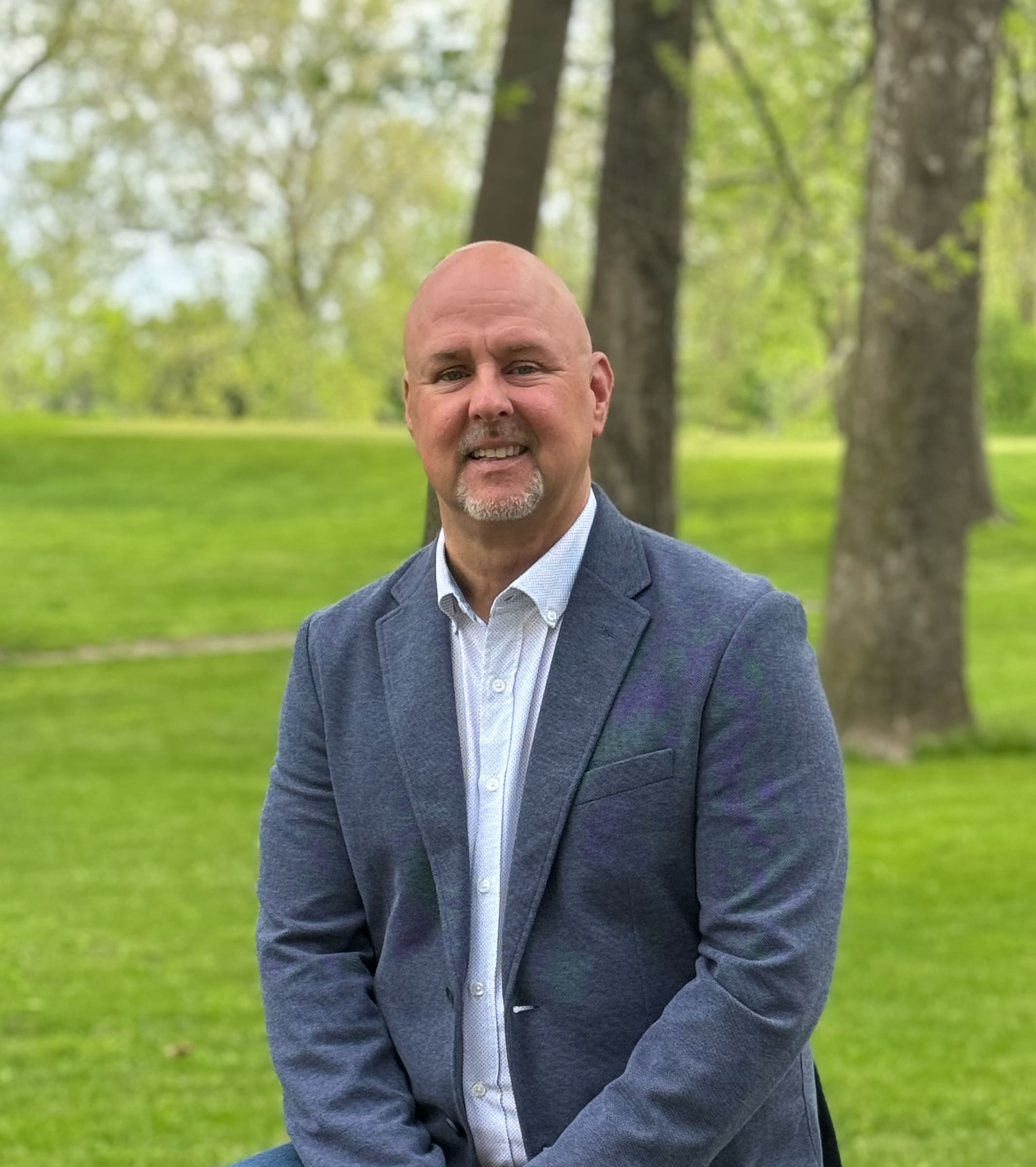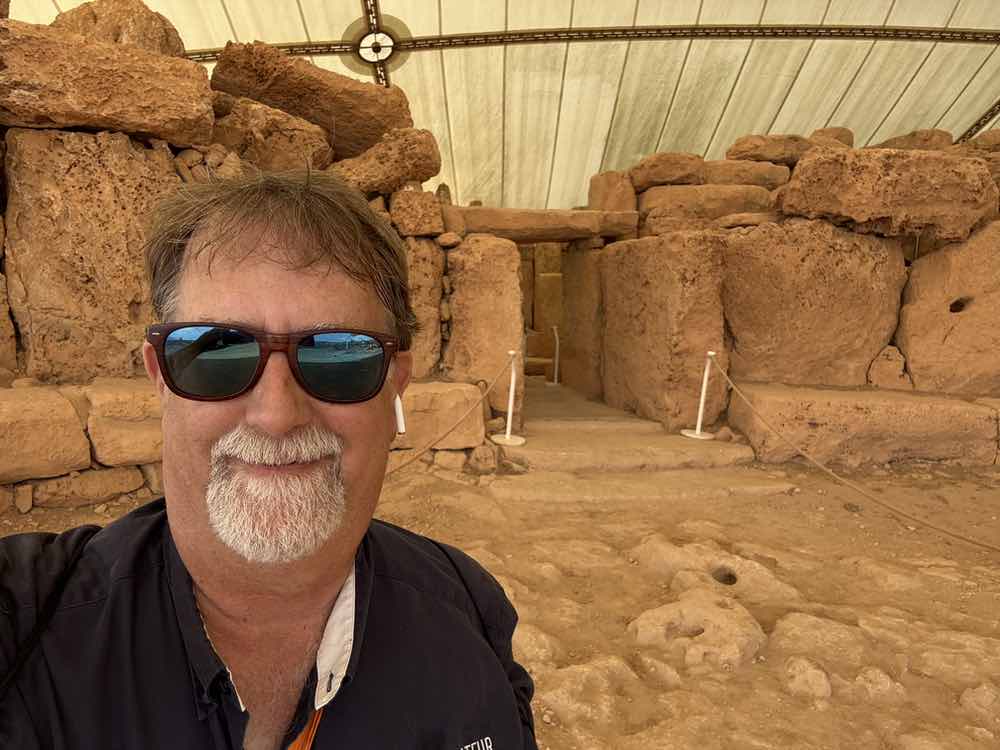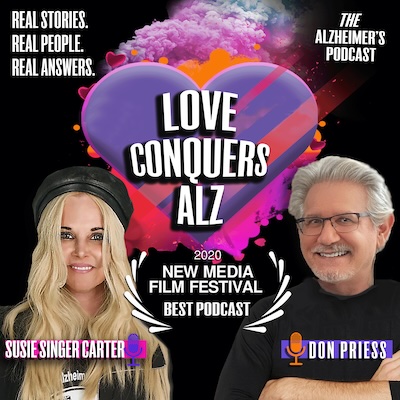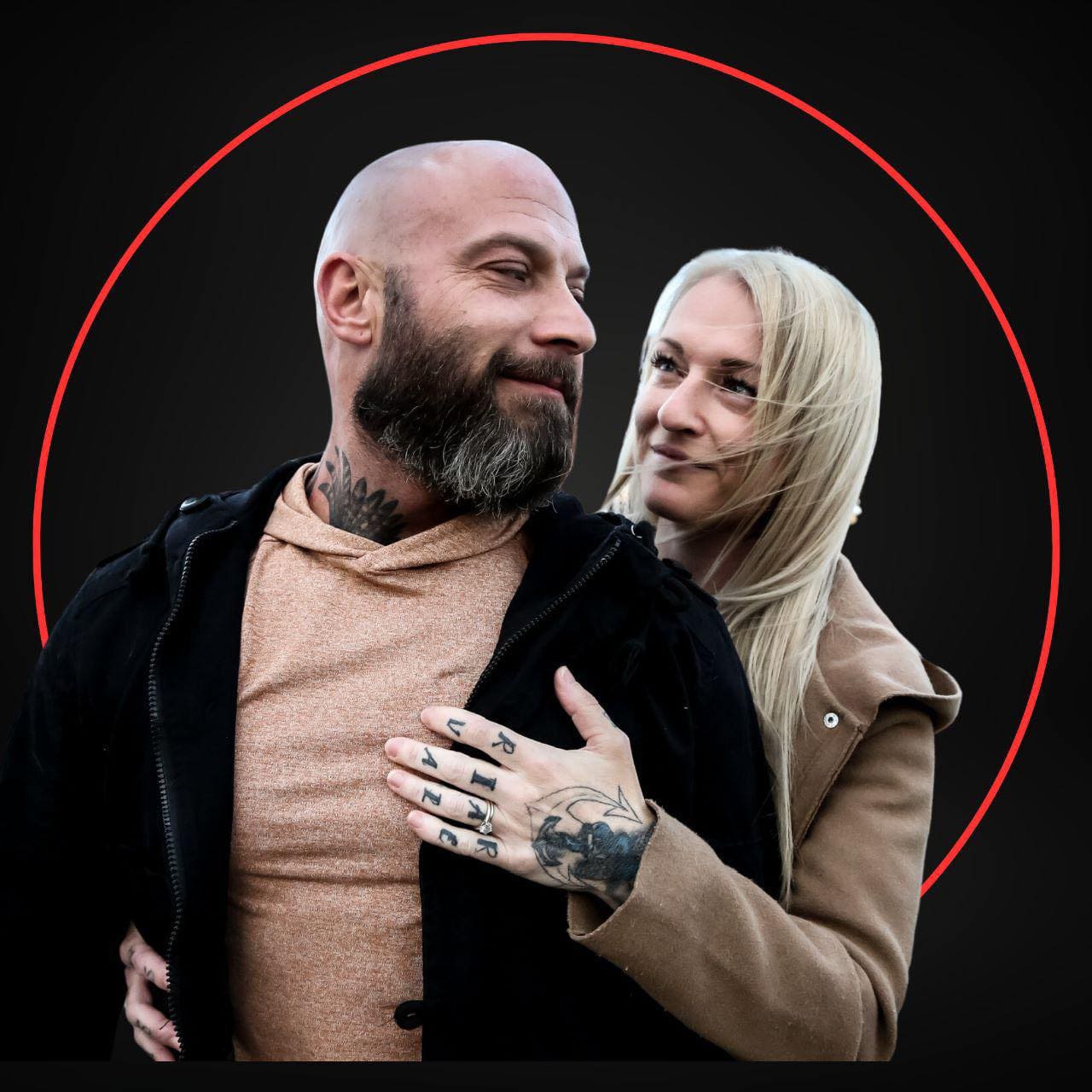The Vision Thing
This way, follow me
n
Those who know my writing know that I frequently boil down leadership to actions in an abnormal environment like war, or emergencies or change. In such an environment a leader has two accountabilities, provide direction and attract followers. I use this conceptual reduction to differentiate leaders from managers, whom I say are accountable for getting the work done in a steady-state environmentu00a0 and developing their people to get the work done faster and better.
n
I used to liken leaders to the fireman who enters the burning building and shouts u201cThe building is on fire! This way out, people, follow meu201d!
n
When I ran leadership workshops, participants were quick to point out several flaws to my simplistic rubric:
n
- n
- u201cHey Alan. Iu2019m expected to do both those roles – leader and manager u2013 so which am I?u201d
- u201cSteady state? When was that. We have continuous change and we still get work done!u201d
- u201cIu2019m expected to provide direction? How would I do that? We live in a VUCA world -itu2019s volatile, uncertain, complex, and ambiguous all at once. How can we plan for the future when we canu2019t figure out today?u201d
- u201cAttract followers? Nobody wants to follow anybody; everybody wants to be a leader. Headless chickens donu2019t flock.u201d
n
n
n
n
n
u00a0I could go on. Usually these workshops were for leaders at least one level, and often three or more, from the absolute top of the organization and there was a lot of pointing at the ceiling and saying, u201cWhat about them?!u201d
n
u00a0Sometimes senior executives kicked these meetings off with a broad direction for the firm so the context that these mid-level leaders could frame their vision was clearer. Sometimes we all just wished for that level of Clarity.
n
Prerequisites for a vision
n
The case for change
n
In my lifetime John Kennedy was the first political leader people talked of as visionary. u201cAsk not what your country can do for you; ask what you can do for your countryu201d seems a little weak to me today but it was inspiring in 1960. Martin Luther King Jr.u2019s u201cI have a dreamu201d speech touched me too. Ronald Reaganu2019s u201cMorning in Americau201d left me a little cold, even though that was my u201cto the right of Genghis Khanu201d period. But when George H. W. Bush was asked what his vision was for America, he derided it as u201cthe vision thing.u201d
n
Thatu2019s the thing about u201cthe vision thing;u201d people have to be ready for one. When Lou Gerstner arrived to turn around IBM in 1993 and he was asked the same question, he said, u201cThe last thing IBM needs right now is a vision.u201d
n
IBM had just lost $8 billion. It was subdividing into individual divisions, which competed with each other. It was buying into the u2018mainframes are dead, PCu2019s will rule the worldu201d mythology, but it was still its old arrogant, u201cWeu2019re Big Blue!u201d self. The company hadnu2019t acknowledged they were broken. There was no compelling case for change. You canu2019t offer someone a new destination if they see no reason to leave home.
n
Hope
n
People also will not change if they are frozen with despair. Often leaders seeking to compel change evoke fear. u201cEverything weu2019ve ever been or done is worthless and destroyed.u201d u201cOh, man, whatu2019s the use.u201d Have you ever tried to lose weight when you are depressed? u201cOh thatu2019ll never happen. Guess Iu2019ll just finish this pint of ice cream.u201d
n
The best leaders evoke pride in what was, what canu2019t be taken away, what will not change. Then they offer the excitement of a new beginningu00a0
n
Reduce Resistance
n
u201cWe fear change,u201d said Garth Algar, Wayne Campbellu2019s sidekick in the movieu201d Wayneu2019s World.u201d This phrase is repeated a lot by Mike Myers and Dana Carvey u00a0in their Saturday Night Live skits which turned into this movie. u00a0I donu2019t know why Mike and Dana use this, but maybe because it is what is given as the reason for change reluctance or resistance and itu2019s absurd.
n
People donu2019t fear change. If they did no one would ever change jobs, get married, have children, move to another city or country or try sushi or chicken nuggets for the first time. People donu2019t fear change. They fear loss.
n
They fear that they might lose their job, or some power theyu2019ve accumulated. They might lose the currency that their skill, developed over many years, has. They fear a loss of Relationships. They fear lost pay or raises or the lost understanding of the performance management system that they have just learned how to game. So they are reluctant to change. They may even resist.
n
Mostly people resist change that they feel is done to them. They fear the loss of autonomy and fair input. They donu2019t resist all change; they resist your change. (My anti-authority, counter-dependent self knows a lot about this.)
n
So before a leader can introduce a vision, they u00a0must
n
- n
- Make a compelling case for why things cannot stay the way they are,
- Offer pride for what was and hope that everything wonu2019t change, and belief in the ability of followers to make the change, and
- Enough detail about he change for followers to see the gains that compensate them for the losses, and give them a choice to commit to the change.
n
n
n
n
What is a visionu00a0u00a0u00a0u00a0u00a0
n
A vision is a clear and inspiring picture of the future state. Individuals can have visions for themselves. Groups, organizations, and companies can have visions. Vision statements are often written with emotionally evocative and sensory rich language:
n
Nike: To bring inspiration and Innovation to every athlete in the world (2022)
n
Honda: Serve people worldwide with the u201cjoy of expanding their lifeu2019s potentialu201d (2022)
n
Tesla: To create the most compelling car company of the 21st century by driving the worldu2019s transition to electric vehicles
n
Apple: To make a contribution to the world by making tools for the mind that advance humankind (1980)
n
Patagonia: To use all its resources to defend life on earth
n
Visions evolve over time. Hondau2019s 1970 vision was u201cDestroy Yamaha;u201d In the 1960s Nikeu2019s wanted to u201cCrush Adidas.u201d
n
Vision, Mission, and Values
n
There is a lot of confusion about these words and in common usage they do overlap a lot. Here is what I used as definitions:
n
- n
- A vision is a destination; it can change if you reach it. It should pull you forward
- A mission is your reason for being, your purpose, your u201cWhyu201d
- Values are the principles that guide you day to day.
n
n
n
n
Clearly there are overlaps. Is Patagoniau2019s vision statement above a destination or is it their mission. Both Yamaha and Adidas are still around, but the visions of Honda and Nike have changed.
n
The limits of vision
n
Visions are intended to pull you forward in the change you make. There is a difference between threat-driven change and vision led change. Threat driven change can move people from the burning building; it can break inertia and get people moving. But over the long term threat and the fear it produces can freeze people. Vision, the promise of something new, better can pull people forward.
n
Shorter is better
n
I still believe that is true, but it depends on how near term the vision is. Most of us inside organizations can hold on to a five year vision, but only if we have some interim milestones to reinforce progress. The vision that is perpetual, always in the future is great if we are seeing improvement, some successes along the way.
n
Words are just words
n
There were times in my long consulting career, when I facilitated a vision off-site and it became clear, either during the off-site, or most often afterwards that all the pretty wordsmithing was B.S. This group of leaders could not or would not live up to their awe-inspiring prose. Why set a goal you canu2019t or wonu2019t achieve? Because you think u201cthe vision thingu201d is expected of you? Because you have the best intentions, but inadequate commitment?
n
Why do people continually start Diet and Exercise programs and repeatedly fail? Because itu2019s hard work. Because their metabolism doesnu2019t cut them any breaks and the temptations are always there. Because the expectation is unreasonable.
n
The Why of Vision.
n
But there is a power in a vision. It can pull you forward. Consider a group of middle eastern nomads five thousand years ago wandering in the desert for forty years looking forward to a green valley where goats and sheep could graze, breed, and lactate, where bee keepers could have apiaries. They were pulled onward by a vision of a peaceful, pastoral Lifestyle:
n
u201cThe Land of Milk and Honey.u201d
n
This week let us wish for such a vision for us all.
n
n
n
“,”tablet”:”
This way, follow me
n
Those who know my writing know that I frequently boil down leadership to actions in an abnormal environment like war, or emergencies or change. In such an environment a leader has two accountabilities, provide direction and attract followers. I use this conceptual reduction to differentiate leaders from managers, whom I say are accountable for getting the work done in a steady-state environment and developing their people to get the work done faster and better.
n
I used to liken leaders to the fireman who enters the burning building and shouts u201cThe building is on fire! This way out, people, follow meu201d!
n
When I ran leadership workshops, participants were quick to point out several flaws to my simplistic rubric:
n
- n
- u201cHey Alan. Iu2019m expected to do both those roles – leader and manager u2013 so which am I?u201d
- u201cSteady state? When was that. We have continuous change and we still get work done!u201d
- u201cIu2019m expected to provide direction? How would I do that? We live in a VUCA world -itu2019s volatile, uncertain, complex, and ambiguous all at once. How can we plan for the future when we canu2019t figure out today?u201d
- u201cAttract followers? Nobody wants to follow anybody; everybody wants to be a leader. Headless chickens donu2019t flock.u201d
n
n
n
n
n
I could go on. Usually these workshops were for leaders at least one level, and often three or more, from the absolute top of the organization and there was a lot of pointing at the ceiling and saying, u201cWhat about them?!u201d
n
Sometimes senior executives kicked these meetings off with a broad direction for the firm so the context that these mid-level leaders could frame their vision was clearer. Sometimes we all just wished for that level of clarity.
n
Prerequisites for a vision
n
The case for change
n
In my lifetime John Kennedy was the first political leader people talked of as visionary. u201cAsk not what your country can do for you; ask what you can do for your countryu201d seems a little weak to me today but it was inspiring in 1960. Martin Luther King Jr.u2019s u201cI have a dreamu201d speech touched me too. Ronald Reaganu2019s u201cMorning in Americau201d left me a little cold, even though that was my u201cto the right of Genghis Khanu201d period. But when George H. W. Bush was asked what his vision was for America, he derided it as u201cthe vision thing.u201d
n
Thatu2019s the thing about u201cthe vision thing;u201d people have to be ready for one. When Lou Gerstner arrived to turn around IBM in 1993 and he was asked the same question, he said, u201cThe last thing IBM needs right now is a vision.u201d
n
IBM had just lost $8 billion. It was subdividing into individual divisions, which competed with each other. It was buying into the u2018mainframes are dead, PCu2019s will rule the worldu201d mythology, but it was still its old arrogant, u201cWeu2019re Big Blue!u201d self. The company hadnu2019t acknowledged they were broken. There was no compelling case for change. You canu2019t offer someone a new destination if they see no reason to leave home.
n
Hope
n
People also will not change if they are frozen with despair. Often leaders seeking to compel change evoke fear. u201cEverything weu2019ve ever been or done is worthless and destroyed.u201d u201cOh, man, whatu2019s the use.u201d Have you ever tried to lose weight when you are depressed? u201cOh thatu2019ll never happen. Guess Iu2019ll just finish this pint of ice cream.u201d
n
The best leaders evoke pride in what was, what canu2019t be taken away, what will not change. Then they offer the excitement of a new beginning
n
Reduce Resistance
n
u201cWe fear change,u201d said Garth Algar, Wayne Campbellu2019s sidekick in the movieu201d Wayneu2019s World.u201d This phrase is repeated a lot by Mike Myers and Dana Carvey in their Saturday Night Live skits which turned into this movie. I donu2019t know why Mike and Dana use this, but maybe because it is what is given as the reason for change reluctance or resistance and itu2019s absurd.
n
People donu2019t fear change. If they did no one would ever change jobs, get married, have children, move to another city or country or try sushi or chicken nuggets for the first time. People donu2019t fear change. They fear loss.
n
They fear that they might lose their job, or some power theyu2019ve accumulated. They might lose the currency that their skill, developed over many years, has. They fear a loss of relationships. They fear lost pay or raises or the lost understanding of the performance management system that they have just learned how to game. So they are reluctant to change. They may even resist.
n
Mostly people resist change that they feel is done to them. They fear the loss of autonomy and fair input. They donu2019t resist all change; they resist your change. (My anti-authority, counter-dependent self knows a lot about this.)
n
So before a leader can introduce a vision, they must
n
- n
- Make a compelling case for why things cannot stay the way they are,
- Offer pride for what was and hope that everything wonu2019t change, and belief in the ability of followers to make the change, and
- Enough detail about he change for followers to see the gains that compensate them for the losses, and give them a choice to commit to the change.
n
n
n
n
What is a vision
n
A vision is a clear and inspiring picture of the future state. Individuals can have visions for themselves. Groups, organizations, and companies can have visions. Vision statements are often written with emotionally evocative and sensory rich language:
n
Nike: To bring inspiration and innovation to every athlete in the world (2022)
n
Honda: Serve people worldwide with the u201cjoy of expanding their lifeu2019s potentialu201d (2022)
n
Tesla: To create the most compelling car company of the 21st century by driving the worldu2019s transition to electric vehicles
n
Apple: To make a contribution to the world by making tools for the mind that advance humankind (1980)
n
Patagonia: To use all its resources to defend life on earth
n
Visions evolve over time. Hondau2019s 1970 vision was u201cDestroy Yamaha;u201d In the 1960s Nikeu2019s wanted to u201cCrush Adidas.u201d
n
Vision, Mission, and Values
n
There is a lot of confusion about these words and in common usage they do overlap a lot. Here is what I used as definitions:
n
- n
- A vision is a destination; it can change if you reach it. It should pull you forward
- A mission is your reason for being, your purpose, your u201cWhyu201d
- Values are the principles that guide you day to day.
n
n
n
n
Clearly there are overlaps. Is Patagoniau2019s vision statement above a destination or is it their mission. Both Yamaha and Adidas are still around, but the visions of Honda and Nike have changed.
n
The limits of vision
n
Visions are intended to pull you forward in the change you make. There is a difference between threat-driven change and vision led change. Threat driven change can move people from the burning building; it can break inertia and get people moving. But over the long term threat and the fear it produces can freeze people. Vision, the promise of something new, better can pull people forward.
n
Shorter is better
n
I still believe that is true, but it depends on how near term the vision is. Most of us inside organizations can hold on to a five year vision, but only if we have some interim milestones to reinforce progress. The vision that is perpetual, always in the future is great if we are seeing improvement, some successes along the way.
n
Words are just words
n
There were times in my long consulting career, when I facilitated a vision off-site and it became clear, either during the off-site, or most often afterwards that all the pretty wordsmithing was B.S. This group of leaders could not or would not live up to their awe-inspiring prose. Why set a goal you canu2019t or wonu2019t achieve? Because you think u201cthe vision thingu201d is expected of you? Because you have the best intentions, but inadequate commitment?
n
Why do people continually start diet and exercise programs and repeatedly fail? Because itu2019s hard work. Because their metabolism doesnu2019t cut them any breaks and the temptations are always there. Because the expectation is unreasonable.
n
The Why of Vision.
n
But there is a power in a vision. It can pull you forward. Consider a group of middle eastern nomads five thousand years ago wandering in the desert for forty years looking forward to a green valley where goats and sheep could graze, breed, and lactate, where bee keepers could have apiaries. They were pulled onward by a vision of a peaceful, pastoral lifestyle:
n
u201cThe Land of Milk and Honey.u201d
n
This week let us wish for such a vision for us all.
n
“}},”slug”:”et_pb_text”}” data-et-multi-view-load-tablet-hidden=”true”>
This way, follow me
Those who know my writing know that I frequently boil down leadership to actions in an abnormal environment like war, or emergencies or change. In such an environment a leader has two accountabilities, provide direction and attract followers. I use this conceptual reduction to differentiate leaders from managers, whom I say are accountable for getting the work done in a steady-state environment and developing their people to get the work done faster and better.
I used to liken leaders to the fireman who enters the burning building and shouts “The building is on fire! This way out, people, follow me”!
When I ran leadership workshops, participants were quick to point out several flaws to my simplistic rubric:
- “Hey Alan. I’m expected to do both those roles – leader and manager – so which am I?”
- “Steady state? When was that. We have continuous change and we still get work done!”
- “I’m expected to provide direction? How would I do that? We live in a VUCA world -it’s volatile, uncertain, complex, and ambiguous all at once. How can we plan for the future when we can’t figure out today?”
- “Attract followers? Nobody wants to follow anybody; everybody wants to be a leader. Headless chickens don’t flock.”
I could go on. Usually these workshops were for leaders at least one level, and often three or more, from the absolute top of the organization and there was a lot of pointing at the ceiling and saying, “What about them?!”
Sometimes senior executives kicked these meetings off with a broad direction for the firm so the context that these mid-level leaders could frame their vision was clearer. Sometimes we all just wished for that level of clarity.
Prerequisites for a vision
The case for change
In my lifetime John Kennedy was the first political leader people talked of as visionary. “Ask not what your country can do for you; ask what you can do for your country” seems a little weak to me today but it was inspiring in 1960. Martin Luther King Jr.’s “I have a dream” speech touched me too. Ronald Reagan’s “Morning in America” left me a little cold, even though that was my “to the right of Genghis Khan” period. But when George H. W. Bush was asked what his vision was for America, he derided it as “the vision thing.”
That’s the thing about “the vision thing;” people have to be ready for one. When Lou Gerstner arrived to turn around IBM in 1993 and he was asked the same question, he said, “The last thing IBM needs right now is a vision.”
IBM had just lost $8 billion. It was subdividing into individual divisions, which competed with each other. It was buying into the ‘mainframes are dead, PC’s will rule the world” mythology, but it was still its old arrogant, “We’re Big Blue!” self. The company hadn’t acknowledged they were broken. There was no compelling case for change. You can’t offer someone a new destination if they see no reason to leave home.
Hope
People also will not change if they are frozen with despair. Often leaders seeking to compel change evoke fear. “Everything we’ve ever been or done is worthless and destroyed.” “Oh, man, what’s the use.” Have you ever tried to lose weight when you are depressed? “Oh that’ll never happen. Guess I’ll just finish this pint of ice cream.”
The best leaders evoke pride in what was, what can’t be taken away, what will not change. Then they offer the excitement of a new beginning
Reduce Resistance
“We fear change,” said Garth Algar, Wayne Campbell’s sidekick in the movie” Wayne’s World.” This phrase is repeated a lot by Mike Myers and Dana Carvey in their Saturday Night Live skits which turned into this movie. I don’t know why Mike and Dana use this, but maybe because it is what is given as the reason for change reluctance or resistance and it’s absurd.
People don’t fear change. If they did no one would ever change jobs, get married, have children, move to another city or country or try sushi or chicken nuggets for the first time. People don’t fear change. They fear loss.
They fear that they might lose their job, or some power they’ve accumulated. They might lose the currency that their skill, developed over many years, has. They fear a loss of relationships. They fear lost pay or raises or the lost understanding of the performance management system that they have just learned how to game. So they are reluctant to change. They may even resist.
Mostly people resist change that they feel is done to them. They fear the loss of autonomy and fair input. They don’t resist all change; they resist your change. (My anti-authority, counter-dependent self knows a lot about this.)
So before a leader can introduce a vision, they must
- Make a compelling case for why things cannot stay the way they are,
- Offer pride for what was and hope that everything won’t change, and belief in the ability of followers to make the change, and
- Enough detail about he change for followers to see the gains that compensate them for the losses, and give them a choice to commit to the change.
What is a vision
A vision is a clear and inspiring picture of the future state. Individuals can have visions for themselves. Groups, organizations, and companies can have visions. Vision statements are often written with emotionally evocative and sensory rich language:
Nike: To bring inspiration and innovation to every athlete in the world (2022)
Honda: Serve people worldwide with the “joy of expanding their life’s potential” (2022)
Tesla: To create the most compelling car company of the 21st century by driving the world’s transition to electric vehicles
Apple: To make a contribution to the world by making tools for the mind that advance humankind (1980)
Patagonia: To use all its resources to defend life on earth
Visions evolve over time. Honda’s 1970 vision was “Destroy Yamaha;” In the 1960s Nike’s wanted to “Crush Adidas.”
Vision, Mission, and Values
There is a lot of confusion about these words and in common usage they do overlap a lot. Here is what I used as definitions:
- A vision is a destination; it can change if you reach it. It should pull you forward
- A mission is your reason for being, your purpose, your “Why”
- Values are the principles that guide you day to day.
Clearly there are overlaps. Is Patagonia’s vision statement above a destination or is it their mission. Both Yamaha and Adidas are still around, but the visions of Honda and Nike have changed.
The limits of vision
Visions are intended to pull you forward in the change you make. There is a difference between threat-driven change and vision led change. Threat driven change can move people from the burning building; it can break inertia and get people moving. But over the long term threat and the fear it produces can freeze people. Vision, the promise of something new, better can pull people forward.
Shorter is better
I still believe that is true, but it depends on how near term the vision is. Most of us inside organizations can hold on to a five year vision, but only if we have some interim milestones to reinforce progress. The vision that is perpetual, always in the future is great if we are seeing improvement, some successes along the way.
Words are just words
There were times in my long consulting career, when I facilitated a vision off-site and it became clear, either during the off-site, or most often afterwards that all the pretty wordsmithing was B.S. This group of leaders could not or would not live up to their awe-inspiring prose. Why set a goal you can’t or won’t achieve? Because you think “the vision thing” is expected of you? Because you have the best intentions, but inadequate commitment?
Why do people continually start diet and exercise programs and repeatedly fail? Because it’s hard work. Because their metabolism doesn’t cut them any breaks and the temptations are always there. Because the expectation is unreasonable.
The Why of Vision.
But there is a power in a vision. It can pull you forward. Consider a group of middle eastern nomads five thousand years ago wandering in the desert for forty years looking forward to a green valley where goats and sheep could graze, breed, and lactate, where bee keepers could have apiaries. They were pulled onward by a vision of a peaceful, pastoral lifestyle:
“The Land of Milk and Honey.”
This week let us wish for such a vision for us all.
The post The Vision Thing appeared first on Wisdom from Unusual Places.
Originally Published on https://wisdomfromunusualplaces.com/blog/

























